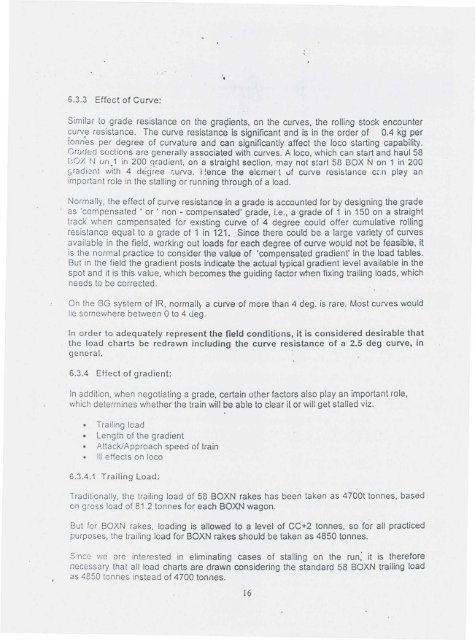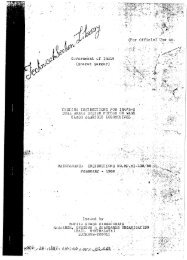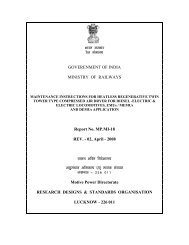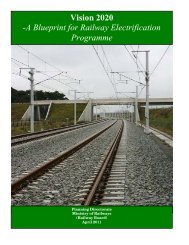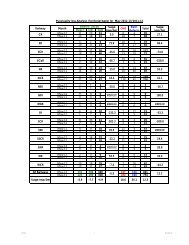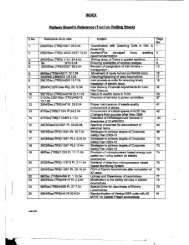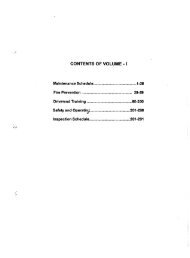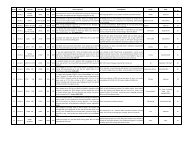RDSO's report no. TFC-77 (January 2002) of the ... - eLocoS
RDSO's report no. TFC-77 (January 2002) of the ... - eLocoS
RDSO's report no. TFC-77 (January 2002) of the ... - eLocoS
- No tags were found...
Create successful ePaper yourself
Turn your PDF publications into a flip-book with our unique Google optimized e-Paper software.
Similar to grade resistance on <strong>the</strong> gradients, on <strong>the</strong> curves, <strong>the</strong> rolling stock encountercurv.e resistance. The curve resistance is significant and is in <strong>the</strong> order <strong>of</strong> 0.4 kg per{annes per degree <strong>of</strong> curvature and can significantly affect <strong>the</strong> loco starting capability.Graded sections are generally associated with curves. A loco, which can start and haul 58UOX N un.1 in 200 qracJient, on a straight section, may <strong>no</strong>t start 50 BOX N on 1 in 200~radi0nt with 4 d&[jree r;urv~. ~!enc.e <strong>the</strong> elemert uf curve resistance Ci:.n play animportant role in <strong>the</strong> stalling or running through <strong>of</strong> a load.Normally, <strong>the</strong> effect <strong>of</strong> curve resistance in a grade is accounted for by designing <strong>the</strong> gradeas 'compensated' or ' <strong>no</strong>n - compe::nsated' grade, Le., a grade <strong>of</strong> 1 in 150 on a straighttrack when compensated for eXisting' curve <strong>of</strong> 4 degree could <strong>of</strong>fer cumulative rollingresistance equal to a grade <strong>of</strong> 1 in 121. -Since <strong>the</strong>re could be a large variety <strong>of</strong> curvesavailable in <strong>the</strong> field, working out loads for each degree <strong>of</strong> curve would <strong>no</strong>t be feasible, itis <strong>the</strong> <strong>no</strong>rmal practice to consider <strong>the</strong> value <strong>of</strong> 'compensated gradient' in <strong>the</strong> load tables.But in <strong>the</strong> field <strong>the</strong> gradient posts indicate <strong>the</strong> actual typical gradient level available in <strong>the</strong>spot and it is this value, which becomes <strong>the</strong> guiding factor when fixing trailing loads, whichneeds to be corrected.On <strong>the</strong> BG system <strong>of</strong> IR, <strong>no</strong>rmally a curve <strong>of</strong> more than 4 deg. is rare. Most curves wouldlie somewhere between 0 to 4


